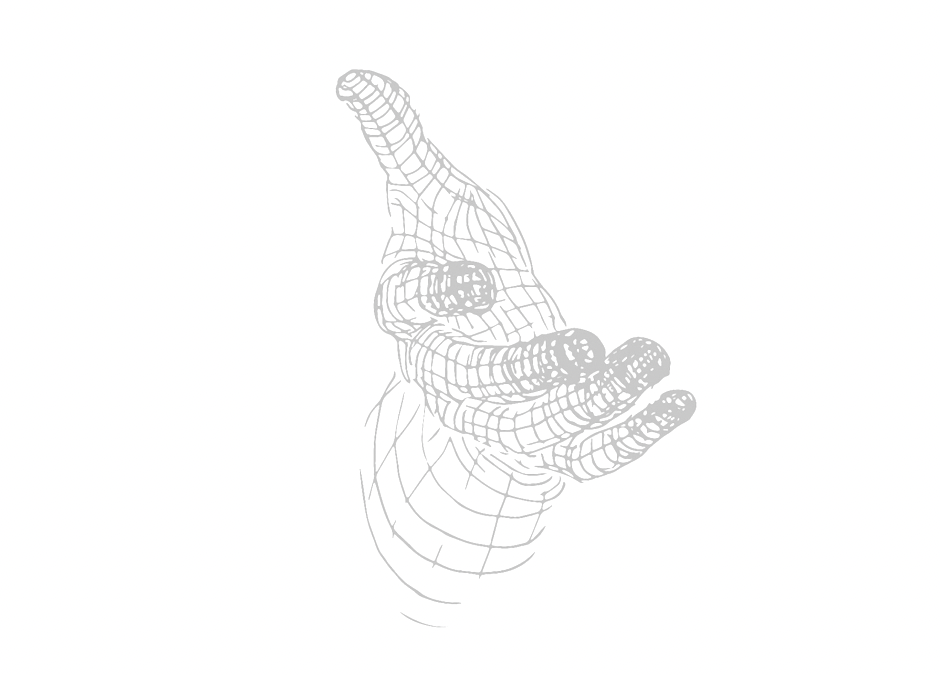What is the sense of touch?
Touch is a unified sensation created by many different specialized sensors working together in parallel. If you look at your skin, described by neuroscientists as Social Organ, it’s populated by millions of nerves endings that capture information from outside the body and then send information all the way up to the brain. Some nerves reach a specific part of the brain called somatosensory cortex, also known as, the discriminative system. This system gives us details of about what we’re touching and where.
In addition to nerves reaching the somatosensory cortex, there are some nerves that travel to a completely different part of the brain called the posterior insular cortex. This area of the brain is part of our emotional system and is involved in our behavioral and emotional responses. Basically, what I want to say is that “there is no sensation without emotion”, your skin is your external nervous system.
When do we start to feel touch?
The sense of touch begins in the womb around the 8-week mark and among the 5 senses (touch, taste, smell, hearing and sight) touch is the first one to develop. Science has shown how it’s not just a matter of time but also, it’s a development priority; in fact, premature infants that are isolated in incubators exhibit a developmental delay, which is due to an inadequate or inappropriate sensory stimulation. But there’s more, it’s not just about biological development…touch deprivation in infants can lead to impaired growth and cognitive development, as well as an elevated incidence of serious infections and attachment disorders.
Why is touch so important in our social life?
As mentioned at the beginning, some scientists have been calling the skin a “social organ.” Intuitively, this makes sense: we both crave touch and are repulsed by it when it is unwanted, uninvited, or inappropriate. Even simple, brief touches on a hand or arm can have tremendous effects.
Human behaviors that involve physical touch have a lot more in common with the social grooming activities we’d typically associate with other species. When monkeys pick through their friends’ fur, they’re not just helping them remove dirt and parasites from hard-to-reach spots. There is undoubtedly a hygienic benefit, but this behavior, which animal behavior researchers call “allogrooming”, has far greater significance. According to anthropologist Robin Dunbar, grooming stimulates the release of endorphins – opiates produced by the brain that trigger feelings of relaxation. This is accomplished by lowering the heart rate, reducing over nervous behaviors like scratching, and even bringing on sleep. Touch reflects our culture; it regulates our social relationship and helps us to communication.
What’s the meaning of touch in my daily practice?
The reason why touch is the core of my clinical practice is because it’s a powerful form of communication. Hearing your story and getting a sense of what matters to you and observing what is held in the tissues allow me to examine and trace where your body has been keeping the score.
Osteopathic Manual Practitioners are well known for a well-developed touch (palpation) and their ability to assess, treat and monitoring how the body has been adapting throughout your life. Thus, Osteopathic Treatment is based on the principles of body unity and the interrelationship between structure and function. This approach emphasizes the integration of the musculoskeletal system with the whole body, such as visceral and cranio-sacral system, and the influences that the impaired function of each has on the other.The aim of most of the Osteopathic Techniques is to reduce tissue tension, help to improve motion, function, flow of liquid and decrease the neurological sensitization; the decision making of which techniques to use is tailored by your needs in other to achieve better function.
Need more information? Have Questions? Get in touch!
If you have any questions regarding an Osteopathic Practitioners use of Touch and how it may help you, click here, or if you’d like to book an appointment, you can book online or reach Andrea at andrea@anantaosteopathy.com
Our Osteopathic Practitioners do not diagnose or practice medicine, nor do we attempt to treat disease. If you are concerned about any medical pathology and/or disease, always consult your physician prior to exploring Osteopathic Manual Therapy.

